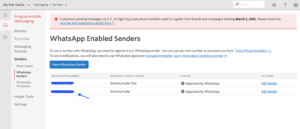
Motivation:
Jupyter Notebooks are useful for developing on your local machine. But how can other people access your chatbot if it is only alive on your PC? In this post I am going to show you how to go live with your Jupyter Notebook chatbot using PyCharm.
Solution:
Our Jupyter chatbot’s job is to answer frequently asked questions. For this example, I used the Jupyter Notebook from Parul Pandey. I have only slightly amended that code and logged unanswered user input. Let’s have a look:
import random
import string
from sklearn.feature_extraction.text import TfidfVectorizer
from sklearn.metrics.pairwise import cosine_similarity
import warnings
warnings.filterwarnings(‘ignore’)
import nltk
from nltk.stem import WordNetLemmatizer
nltk.download(‘popular’, quiet=True) # for downloading packages
nltk.download(‘punkt’) # first-time use only
nltk.download(‘wordnet’) # first-time use only# Reading in the corpus
with open(‘chats.txt’, ‘r’, encoding=’utf8', errors=’ignore’) as fin:
raw = fin.read().lower()# Tokenisation
sent_tokens = nltk.sent_tokenize(raw) # converts to list of sentences
word_tokens = nltk.word_tokenize(raw) # converts to list of words# lemmer Preprocessing
lemmer = WordNetLemmatizer()def LemTokens(tokens):
return [lemmer.lemmatize(token) for token in tokens]remove_punct_dict = dict((ord(punct), None) for punct in string.punctuation)def LemNormalize(text):
return LemTokens(nltk.word_tokenize(text.lower().translate(remove_punct_dict)))def response(user_response):
user_response = input()
robo_response = ‘’
sent_tokens.append(user_response)
TfidfVec = TfidfVectorizer(tokenizer=LemNormalize, stop_words=’english’)
tfidf = TfidfVec.fit_transform(sent_tokens)
vals = cosine_similarity(tfidf[-1], tfidf)
idx = vals.argsort()[0][-2]
flat = vals.flatten()
flat.sort()
req_tfidf = flat[-2]
if (req_tfidf == 0):
robo_response = robo_response + “ > I am sorry, I didn`t catched that. But I am constantly learning..”
with open(‘userinputs.txt’, ‘a’) as f:
f.write(‘ > ‘+user_response+’.’+’n’)
return robo_response
else:
robo_response = robo_response + sent_tokens[idx]
return robo_response
user_response=user_response.lower()
res = response(user_response)
print(“FAQ Bot: “, end=””)
print(res)
Since this post focuses on how to convert a Jupyter Notebook into a PyCharm web app I will not explain this code in much detail. All we need to know is that we have a simple chats text file for our question-answer mapping:
..so our bot can answer questions like:
If you ask questions that bot can currently not answer:
..this is fetched in a simple text file “userinputs” for you to further train your bot to become smarter in the future:
As you can see this simple Jupyter Notebook chatbot works fine, even though it’s not very beautiful within the Notebook. Even worse, it’s difficult to share your bot with the world as long as it’s locked in a Jupyter Notebook. We’ll now make it more attractive using PyCharm.
2. 4 DO’s and 3 DON’Ts for Training a Chatbot NLP Model
3. Concierge Bot: Handle Multiple Chatbots from One Chat Screen
For your convenience, you can download the PyCharm project from my post:
After you have downloaded that project, we will replace the “views.py” with our Jupyter Notebook from above. You can find the complete file in my Github.
# PyCharm specific
from django.shortcuts import render
from django.http import HttpResponse
from django.template import loader# Original Jupyter Notebook
import random
import string
from sklearn.feature_extraction.text import TfidfVectorizer
from sklearn.metrics.pairwise import cosine_similarity
import warnings
warnings.filterwarnings(‘ignore’)
import nltk
from nltk.stem import WordNetLemmatizer
nltk.download(‘popular’, quiet=True) # for downloading packages
nltk.download(‘punkt’) # first-time use only
nltk.download(‘wordnet’) # first-time use only
Since we are going to have html input and output forms we’re going to load the template and take care of input and content:
# PyCharm specific
def index(request):
template = loader.get_template('app.html')
con = {}if request.method == 'POST':
user_input = request.POST.get('input')
chat = request.POST.get('content')
print(user_input)
The rest remains our original Jupyter Notebook:
# Reading in the corpus
with open('app/chats.txt', 'r', encoding='utf8', errors='ignore') as fin:
raw = fin.read().lower()# Tokenisation
sent_tokens = nltk.sent_tokenize(raw) # converts to list of sentences
word_tokens = nltk.word_tokenize(raw) # converts to list of words
# lemmer
# Preprocessing
lemmer = WordNetLemmatizer()
def LemTokens(tokens):
return [lemmer.lemmatize(token) for token in tokens]
remove_punct_dict = dict((ord(punct), None) for punct in string.punctuation)
def LemNormalize(text):
return LemTokens(nltk.word_tokenize(text.lower().translate(remove_punct_dict)))
# Generating response
def response(user_response):
robo_response = ''
sent_tokens.append(user_response)
TfidfVec = TfidfVectorizer(tokenizer=LemNormalize, stop_words='english')
tfidf = TfidfVec.fit_transform(sent_tokens)
vals = cosine_similarity(tfidf[-1], tfidf)
idx = vals.argsort()[0][-2]
flat = vals.flatten()
flat.sort()
req_tfidf = flat[-2]
if (req_tfidf == 0):
robo_response = robo_response + " > I am sorry I didn`t catched that, but I am constantly learning.. Could you please try to say it in other words?"
with open('app/userinputs.txt', 'a') as f:
f.write(' > '+user_response+'.'+'n')
return robo_response
else:
robo_response = robo_response + sent_tokens[idx]
return robo_response
user_response = user_input.lower()
res = response(user_response)
print("FAQ Bot: ", end="")
print(res)
res = res.split(">", 1)
You might have noticed that we slightly changed our chats.txt file for PyCharm. It now looks like this:
The idea is just to add some extra keywords to help our Bot to give the right answers. These keywords will not be displayed to the user (res.split(“>”, 1)). This way we keep the answers clean and tidy:
By the way, since some of you have asked me: instead of using localhost you can add your pc and port in the manage.py:
.. so your colleagues can interact with your bot right away:
Congratulations:
You have adapted your Jupyter Notebook bot into a web app with PyCharm. If you want to learn more about distance metrics used for chatbots you might want to read this post:
Many thanks for reading, I hope this was supportive! Any questions, please let me know. You can connect with me on LinkedIn or Twitter.
Originally published on my website DAR-Analytics.
- '
- "
- 7
- 9
- access
- AI
- All
- app
- Bot
- care
- chatbot
- chatbots
- code
- content
- CZ
- detail
- distance
- Django
- English
- EU
- EV
- EY
- FAQ
- Fe
- fine
- future
- How
- How To
- hr
- HTTPS
- ia
- idea
- IDX
- IP
- IT
- Jupyter Notebook
- LEARN
- learning
- List
- load
- local
- Long
- LP
- medium
- Metrics
- nlp
- notebooks
- Other
- PC
- People
- project
- Raw
- Reading
- report
- REST
- Share
- Simple
- So
- Stem
- system
- The Future
- token
- Tokens
- Training
- Trends
- web
- within
- words
- works
- world







